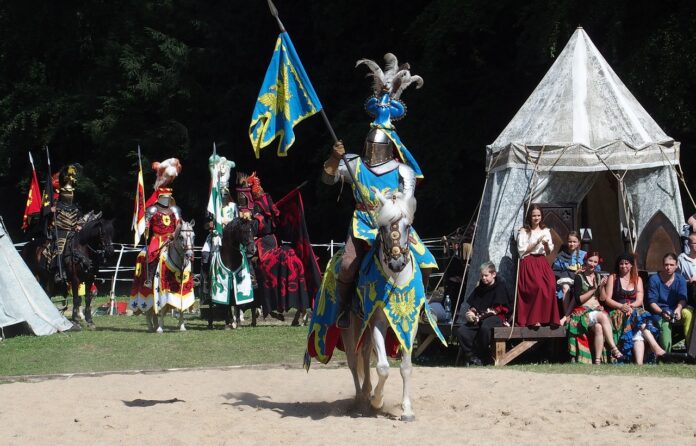The image of a medieval knight is often surrounded by a romantic aura, but the reality was far from colorful and positive. Knights were once simply warriors, more or less noble, but the heyday of knighthood coincided with rather dark times. Later, writers and poets romanticized their image, creating literary defenders of justice, protectors of the weak and oppressed, which, in many cases, was far from the truth.
Facts About Knights
- Contrary to popular myth, many knights fought not only in hand-to-hand combat. History mentions several noble knights who preferred the bow to the sword.
- Knightly tournaments originated in France and Germany in the 11th century and later spread to other European lands.
- It was thanks to knights that trial by combat emerged, where the accused could prove their innocence by participating in a fight to the death.
- Most future knights spent their youth as pages and squires. As assistants to senior knights, they learned the art of war and other skills.
- The knighthood in Europe began to take shape around the 8th-9th centuries, during the reign of Charlemagne.
- Unlike the light lances of infantrymen, knights used huge and extremely heavy lances for battering charges.
- Since both the riders and their horses were often clad in armor, such cavalry couldn’t maintain high speeds for long. However, for short bursts of gallop, the horses were capable, and considering the combined weight of the armored knight and the armored horse, nothing in that era could withstand the charge of a knightly attack.
- In the early days of knighthood, knighthood ceremonies sometimes occurred when a noble youth was just 12-13 years old, but later it was postponed until they were 20-21 years old.
- At that time, only knights had the right to wear spurs, which were one of the important symbols of their status.
- Every knight had a personal coat of arms. The peak of heraldry, the science of coats of arms, occurred during this era.
- Since no medieval ruler could afford to maintain an entire army of personal knights, they were granted land, which sustained them. In return, knights were required to respond to their lord’s summons. However, the duration of their service was limited by oath, and if a king failed to resolve his problems within, say, two months, his knights had the right to pack up and return home.
- When going on a campaign, knights usually brought several spare horses and two or three squires.
- Armor was typically custom-made for knights, making it not only incredibly expensive but also weighing dozens of kilograms.
- Since fighting in such armor was challenging and weapons quickly dulled against opponents’ armor, knights used large and heavy swords, often not very sharp. They relied not on fencing skill but on brute force, preferring to break through enemy armor with powerful blows rather than find a weak spot with a blade.
- Most knights were not literate, as they looked down on reading and writing, leaving such tasks to monks.
- Knightly castles had no toilets—courtyards or simply staircases were used instead. Plates were often given to dogs to lick clean rather than washed.
- It sometimes took knights up to an hour to don their armor. Moreover, it was often impossible to fasten all the pieces by themselves, so squires were needed.
- The Crusades lasted about 200 years.
- For certain offenses, a knight could be stripped of his status. Sometimes this was followed by other punishments, such as execution, and sometimes not.
- In the Middle Ages, only nobles could become knights.
- It was the knight-crusaders who brought the custom of regular bathing to Europe, having adopted it from the Saracens (Arabs) during the Crusades.
- Some chronicles claim that knightly horses, clad in armor, could break through the clay walls of Saracen fortresses at full gallop.
- The knightly code emphasized that a knight had to be courteous to women. However, this rule only applied to noblewomen, not to commoners.
- Modern knights are honorary titleholders in some countries. The institution of knighthood as part of the aristocracy still exists in the United Kingdom.
- The invention of the crossbow significantly reduced the popularity of knights, as crossbow bolts could pierce steel armor. After the advent of firearms on the battlefield, knightly cavalry ceased to be a formidable force.
